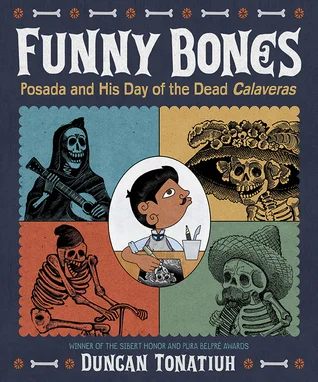It's almost December and just a little less than two months to go until the ALA Youth Media Awards are announced. There are Mock Caldecott groups happening at schools and libraries and even online. Of course, there are Mock Newbery groups, too. But a few years ago I started promoting a Mock Sibert since a quick google search did not reveal much when it comes to the top award for children's nonfiction.
What is the Sibert Award? The Robert F. Sibert Informational Book Award goes to the most distinguished informational book published in the United States. To be honored/win the Sibert Award, the book must include these important elements and qualities:
- Excellent, engaging, and distinctive use of language.
- Excellent, engaging, and distinctive visual presentation.
- Appropriate organization and documentation.
- Clear, accurate, and stimulating presentation of facts, concepts, and ideas.
- Appropriate style of presentation for subject and for intended audience.
- Supportive features (index, table of contents, maps, timelines, etc).
- Respectful and of interest to children.
Funny Bones: Posada and His Day of the Dead Calaveras by Duncan Tonatiuh - Winner of the 2016 Sibert Award
Some year, I have joined with friends to promote great nonfiction titles. This year, Michele Knott from Mrs. Knott's Book Nook will be joining in. Check out her posts today and next week when she makes her predictions. If you are interested in participating here is what you need to do.
- Decide whether you will do your Mock Sibert predictions as an individual or with students or children from your school or library.
- Go back through the new release posts found at this blog and think about which ones would be eligible (based on the criteria above).
- Read, read, read. Either by yourself or with students and begin to create a top 5 list.
- Post about your top 5 books and if you have students participating in your Mock Sibert indicate which ones they would like to see win.
- By January 18, 2017, share with everyone which of your favorites do you think will walk away with the "gold". If you share your posts via social media, please use the hashtag #mocksibert2017
- If you need to tweak the above suggestions in order to participate, please do. Make this fun and no stress.
On Wednesday, January 25, 2017, I will post the winners of the Sibert Award announced on Monday, January 23, 2017.
Please indicate in the comments if you think you will be participating in the 2017 Mock Sibert event. And I do hope to see many of you participating this year.
Remember to check back in next Wednesday for my Mock Sibert book selections.
Don't forget to link up your nonfiction reviews...




























